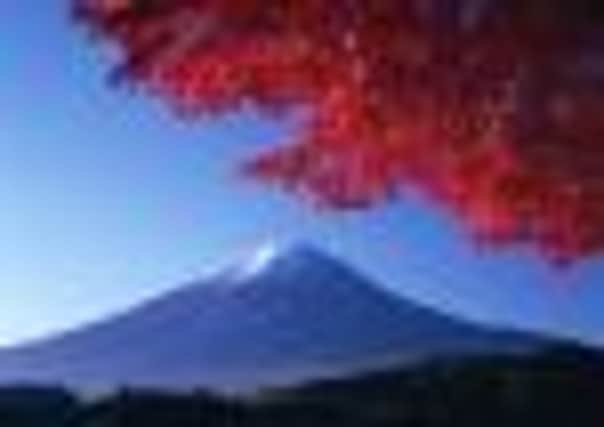Ancient and modern


Never was there a place where so many people dart about between such tall skyscrapers before thrusting themselves on to an apparently unfathomable transport network as Tokyo. But it’s all done with such ease and efficiency that it doesn’t overwhelm new visitors.
Tokyo is a place where ancient temples hold their own nestled between the grey and glistening skyscrapers and technology and mythology go hand in hand. The culture which created the seven-minute lunch break has given rise to the bento box – a painstakingly decorated and thoughtfully prepared meal of Japanese ingredients which are available in shops, kiosks and vending machines on every street corner.
Advertisement
Hide AdAdvertisement
Hide AdPerhaps the most fun example of contrasts is in the nightlife hub of Roppongi. Karaoke isn’t just an evening of entertainment, it’s where the unassuming Japanese let go of all their inhibitions and drunkenly belt out a tune.


It doesn’t matter if think you can’t sing. In the privacy of a karaoke box (it’s actually a rather big private room) family, friends and workmates share an unforgettable experience where the only rule is that you entertain each other.
If something a little more tranquil, though no less cultural, is to your tastes then the hushed tea houses provide the yin to karaoke’s yang.
In a solemn tea making ceremony, known in Japan as the Way of Tea, a cuppa is by no means quick. The ritual takes place in a small and simple chashitsu (tea room) and requires a strict adherence to tradition and the host goes though painstaking rehearsals to ensure there are no mistakes.
Advertisement
Hide AdAdvertisement
Hide AdIn the same way the Japanese cherish their heritage and embrace Western culture, two religions abide happily with each other and the people pick and choose between them. Emerge at the end of Nakamise-dori, one of many shopping-mad Tokyo’s designer boutique-laden streets, and you find yourself in the heart of the Japanese spiritual world where a Buddhist temple sits cheek by jowl with a Shinto shrine. Our guide put it simply, explaining that the Japanese use the Shinto tradition for celebratory events, like marriages, and Buddhism for solemn ones, like funerals.
Senso-ji, like the countless other temples scattered around the country, is no empty refuge of an abandoned religion. This is a lively hive of activity where worshippers get their future predicted or assured in at least half a dozen different ways and, if they behave respectfully, tourists can too.
Shibuya is Tokyo’s answer to New York’s Times Square, famous for its shopping and scramble crossing. When traffic is stopped at this busy junction pedestrians surge across the road from all sides, like marbles spilling out of a box. No visit to Japan would be complete, for the geeks among us, without a visit to Akihabara – otherwise known as Electric City.
In Akihabara, the latest gadgets are on sale and much cheaper than you’ll find back home, if it’s even available at home yet. A playground for people who are big kids at heart.
Advertisement
Hide AdAdvertisement
Hide AdThe Mandarin Oriental Hotel in the central district of Hibiya is a stone’s throw from Nihonbashi, the ancient bridge which typically forms part of a modern highway and pin-points the centre of the city and the whole of Japan. The 38th floor reception offers breathtaking views towards the Imperial Palace, the Shinjuku skyscraper district, and Japan’s spiritual heart, Mount Fuji, on the horizon with its near-perfect snow-capped peak.
The innovative culinary art of molecular gastronomy at the Mandarin’s Tapas Molecular Bar is an introduction to glass plates and steel menus. Syringes and pipettes demonstrate the science of this unique approach to flavour, producing a remarkable “tasting” experience.In the space of about two hours, entertaining chefs prepare about 20 bite-sized delicacies which deliver surprise after surprise for the taste buds.
I flew Business Class from London Heathrow to Tokyo Haneda with British Airways which arrives and departs in time to allow for breakfast on opposite sides of the world. Haneda Airport opened last year to international traffic with the construction of a new terminal and it’s a short 20-minute ride to central Tokyo.
Getting there
Mike Hornby flew to Japan with British Airways and was a guest of Mandarin Oriental Hotels and ANA Crowne Plaza Kobe.
Advertisement
Hide AdAdvertisement
Hide AdBritish Airways Holidays offer four nights’ room-only at the five-star Mandarin Oriental, Tokyo from £1,599 on departures during June.
Price includes return BA flights from Heathrow, if booked by May 31. Reservations: 0844 493 0758 and ba.com/tokyo.
Flight only rates by BA to Japan National Tourism Organization www.seejapan.co.uk or call 0207 398 5670.